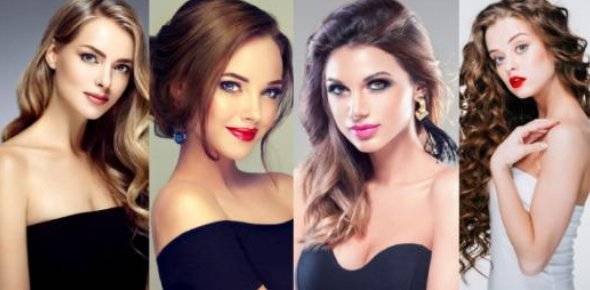Modeling Jargon | Model Factory
- 20 May 2020
- Models
Modeling Jargons:
The modeling industry has its own definition. But one can its own definition as per experience gained. We just tried for Modeling Jargons. You may or may not agree with them. But you should get positive vibes after going through jargons. So why are you waiting? Let's go with Modeling Jargons.
A
Agency - see Model Agency or Casting Agency.
B
Book - See Portfolio.
Booker - a booker is someone who works in a model agency and keeps track of which clients hire which models.
Bookout - Notification to your agent that you're not available for a casting or job, for either professional or personal reasons. You are not available at this time, the clients cannot book you during that time, you've "booked out".
Buyouts - This is the payment for the use of model pictures. Often this is negotiated on top of the day rate and sometimes it's included. The type of use must be set (poster, advertisements, internet, TV, etc.), as well as the run-time and the countries.
For New Faces we have some tips and information.
C
Call-time - The time at which a model must be at the location and ready to work.
Call Back / Recall - after the first casting a callback or recall is held to narrow down the selection process. It is not unusual to get a callback before getting a job or being turned down.
Casting - Castings are notices of modeling jobs that are made to models, casting agencies, or on modeling websites. They show details of the types of models required for an upcoming production. This could mean a call where every model can apply or a date on which (preselected) models introduce themselves to the client, who will then make the final decision. The client sets the requirements and makes his/her choice.
Casting Agency - Casting agencies are agencies specialized in finding talented people for different fields like modeling, singing, acting, dancing, and others. They work similarly to scouts. They search for prospective persons that could participate in different kinds of projects like TV, photo, video, advertisement casting, and others. Usually, the models in a casting agency don't have an exclusive contract and can work for different agencies.
Casting Detail Sheet - Information sheet for the model, which contains all important information about a casting: call time, direction, client, etc.
Catwalk/ Runway - Catwalk or runway describes a narrow, usually elevated platform that runs into an auditorium, used by models to demonstrate clothing and accessories during a fashion show.
Close Up - In film, television, or photography a close-up tightly frames a person or an object. Close-ups are one of the standard shots used regularly along with medium shots and long shots.
Portfolio Tips for New Comers.
Composite Card - Also referred to as a comp card, sed card, (zed card), or model business card. A composite card is a piece of card that is printed with at least two photos of you in various poses, settings, outfits, and looks (the widest variety possible). It includes your name, your contact information, usually your agency's info, and all your stats. Comp cards come in lots of different formats depending on the city, agency, and the type of model you are. Agencies will usually issue comp cards for you after they sign you. A composite card serves as the latest and best of a model's portfolio and is used as a business card.
Contest - A contest in this case mostly refers to a model contest. This is an event in which models engage in competition against each other, often for a prize or similar incentive. Modelmanagement.com runs its own international Fresh Faces contest annually.
Copyright - Copyright is the set of exclusive rights granted to the author or creator of the original work, including the right to copy, distribute and adapt the work. These rights can be licensed, transferred, and/or assigned.
Cover Shooting - A photo shooting for a cover of a magazine. Depending on the magazine it has great significance for the awareness of the model.
Cuttings - Documented releases of a model in magazines, catalogs, or other media.
E
Editorial - Photographs made to illustrate a story or idea within the context of a magazine. These are usually assigned by the magazine.
F
Fitting - The session that takes place before the photoshoot where the clothes to be modeled are fit onto the model. Based on the model's particulars, the clothes are usually altered to fit. When you go to a fitting, be prepared to stand around partially clothed all day long, in front of several people. These people will usually be stylists, seamstresses, and designers. The fitting is often included in the day rate.
G
Go&See - A model's appointment to see a potential client, to present his book and his - or herself in person, and to leave a good impression. Often a client keeps the models in mind for his next shoot/job.
H
Hair Stylist - A hairstylist is someone who cuts and styles hair. He or she often offers other services such as coloring and hair extensions. He or she cares for the perfect hairstyle of the model at the shooting, runway show, or event.
Head Sheet - A poster displaying headshots and information about models represented by a modeling agency.
L
Lingerie - Lingerie is the word used for alluring undergarments.
Location - Any place where a shoot (photography or film) takes place. When you are on location, it means you are outside the controlled environment of the studio or soundstage and should prepare accordingly.
M
Make-Up Artist - A makeup artist (MUA) is an artist whose medium is the human body, applying makeup and prosthetics for theatrical, television, film, fashion, magazines, and other similar productions including all aspects of the modeling industry.
Model Agency - A model agency is a company that represents fashion models, to work for the fashion industry. These agencies earn their income via commission, usually from the deal they make with the model or the client. The model agency presents the models to the clients, promotes them to foreign agencies, and is in charge of the model's chart, book, portfolio, buyouts, travel, etc.
Model Release - A legal document provided by the client/photographer and signed by the model or agent. It gives permission to the photographer to use photographs taken at a particular sitting. If photographs are used without a release, or in a way different from what is stated in the release, then the model can sue for breach of contract.
N
New Faces - New Faces or newcomers are models who are new to the business. They are just starting their career and usually don't have a professional book done.
P
Plus Size - Plus-size model is a term applied to a person who is engaged primarily in modeling plus-size clothing. Plus-size models also engaged in work that is not strictly related to selling large-sized clothing, e.g., stock photography and advertising photography for cosmetics, household and pharmaceutical products, and sunglasses, footwear, and watches. Therefore plus-size models do not exclusively wear garments marketed as plus-size clothing. This is especially true when participating in fashion editorials for mainstream fashion magazines.
Polaroid - Polaroid photo is a special type of photo that is used in the modeling business. Polaroids are usually needed for agencies or scouts to see the natural look of the model. This is something every model needs in their portfolio if they intend to be serious in this business. Modelmanagement.com offers professional polaroids for new models who require them or for professionals who need up-to-date polaroids.
Prints - Prints are printed negatives, the real photos.
Check Photography Techniques here.
S
Sedcard - See Composite Card.
Senior model - A senior model is a professional model in his 40s/50s/60s. As the average age is constantly rising, the advertisements go back more and more to older models to approach their target group. Senior models often have a good book as they can show a lot of experience or after easily being booked for ads they get publications from the beginning on.
Set - This is where the action of the shoot takes place usually within a professional studio or within a location. It includes all the elements which make the shoot; for example, the lighting, camera, art direction, and art directed scenery.
Shooting - Shooting in general means the implementation of photo or film shoots.
Stock Photos - Stock photography is the supply of photographs licensed for specific uses. It is used to fulfill the needs of creative assignments instead of hiring a photographer. Today, stock images are usually presented in searchable online databases, where they are then purchased and delivered online.
Often, they are produced in studios using a wide variety of models posing as professionals, stereotypes, expressing stereotypical emotions and gesticulations, or involving pets.
Stylist - The stylist is in charge of the outfit of the model and discussing at length with the photographer or director, the theme of the shoot.
T
Tearsheet - sometimes written 'Tear sheet' is a term used by Advertising agencies to denote a page cut or torn from a publication to prove to the client that the advertisement was published. Media buying agencies are often required by clients to provide tear sheets along with a post-analysis of any advertising campaign.
Test Shooting / TFP - An agreement between the model and photographer whereby they work for each other on a mutually beneficial basis. No fees other than sharing film-and-developing expenses are involved. They work together on a new idea or on their portfolios. The photographer provides a selection of prints from the shoot in recognition of the model's time commitment.
U
Usage - Models get paid for each different medium in which their photograph is used. These different mediums, or usages, may include consumer magazines, trade magazines, product packaging, print ads, bus ads, subway ads, billboards, magazine covers, direct mail, magazine editorials, posters, catalogs, brochures, point-of-purchase (point-of-sale or p-o-p), annual reports, book covers, kiosk, duration (those big portable billboards that are towed around behind trucks), newspapers, etc. The model receives an additional fee for each usage the client buys. Usages also vary according to time and region.
The longer the ad runs and the more markets in which it appears, all drive up the model's fee. The largest usage is the unlimited time usage, worldwide buyout. That means the client can plaster the photograph across every city in the world in every possible usage until the end of time.
"Interested models click here to further information modeling profession."






